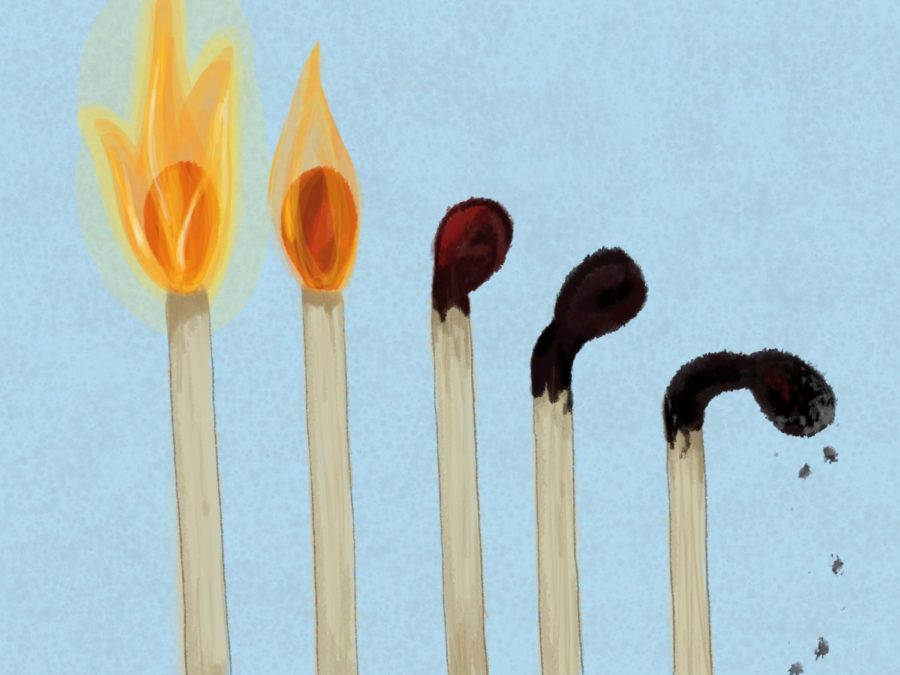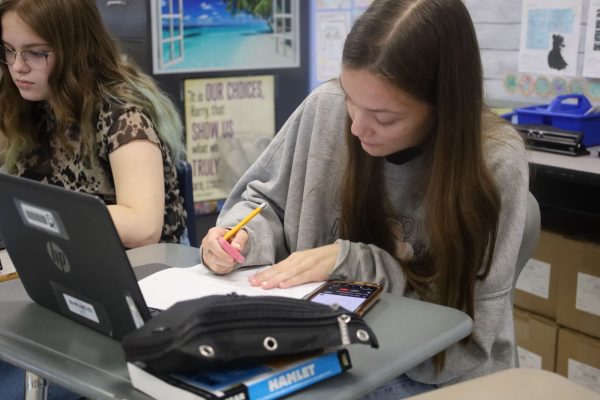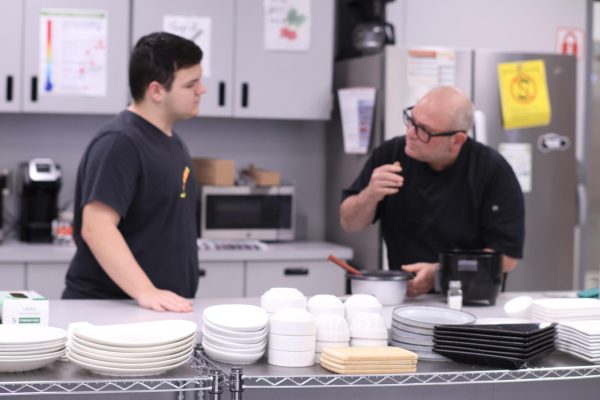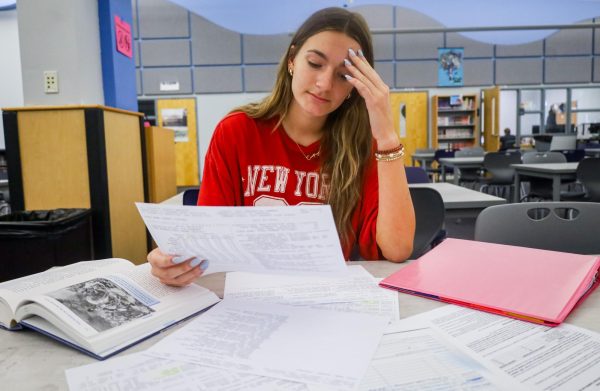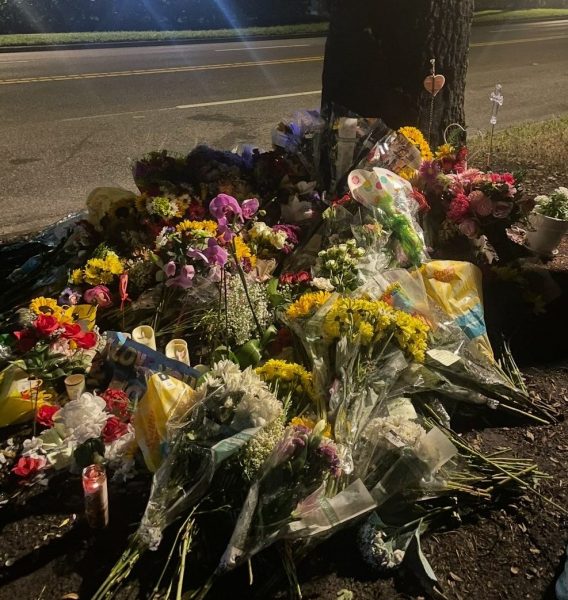Burnout: The Struggle is Real
A serious hurdle many high schoolers face but talk little about
photo by Alexis Madlang
A survey conducted between August 2020 and April 2021, found that 71% of nearly 1,100 Ohio State University (OSU) students said they were battling burnout this past spring. That number was up from about 40% back in the summer of 2020. So, how have high schoolers been affected?
Exhaustion. Collapse. Fatigue. Weariness. Consumption. Stress.
According to author Lexi Wright, burnout is a state of mental, physical, or emotional exhaustion. Burnout in children happens when kids are faced with ongoing stress or frustration with no chance to relax and recharge.
“The name in and of itself is exactly how it feels: the flame of motivation is snuffed out, and you feel completely unable to do anything productive, sitting in a rut of laziness and mindlessness,” junior Eshan Kabir, who plays in the band, participates in clubs, regularly volunteers and takes four AP classes said.
The dangers of burnout
Burnout can cause real physical and psychological problems such as headaches, insomnia and depression, which is why it is important to start taking steps to reverse burnout as soon as symptoms are recognized. Many students admit to currently experiencing burnout or having so in the past.
“In one of my classes, my teacher asked who is tired of school after exams, and almost every student in the class raised their hand,” Kabir said. “When not only the majority, but almost every student in the class is feeling burnt out from school, it becomes apparent that it’s becoming a problem.”
Senior Neda Kadivar, who takes five APs and participates in clubs, some of which she leads in, experienced a damaging burnout her junior year that not only took a toll on her mentally, but physically. She lost about half of her hair, and with that, her mental health declined, causing her many doctor visits and medical tests relating to stress.
“Even now I don’t have a diagnosis for everything. I just have a bunch more conditions I can list as a result of my stress. It’s something I hope to never repeat but even in senior year I do feel myself slipping in and out of it,” Kadivar said.
Mental health is a key part of the conversation when it comes to burnout. Whether it is extreme stress, anxiety or depression, students can get caught in a burnout, especially if they are going through it alone. What may keep most students in a burnout relates back to expectations, and being afraid or embarrassed to reach out and tell someone about the struggle.
Why burnout happens
A leading cause of burnout is the constant pressure placed on students to perform well in order to succeed in the competitive world. This haunts students, especially as they move up through high school.
While demanding societal expectations can be unintentionally placed on students by their parents and peers, there is a divide on whether teachers also contribute to this workload.
“I feel like they don’t understand that we have other things outside of school to do, and that’s a really big problem when they pile homework assignments,” junior Alfonso Hilero, who plays varsity tennis, takes three APs and volunteers at the Dr Phillips Health Hospital every weekend, said. “I’m hurrying and making sure that I finish them but at the same time, I’m going to bed super late, because I’m balancing sports and academics.”
While Kabir recognizes that teachers are just doing their job and are trying to prepare students for the workload they may see in college, the problem is still overwhelming.
“Granted, I don’t think they are at fault for it, but the mounting pressures lead to a tipping point where you find that it is easier to stop working and relax than to keep pushing forward on the train that is education leading to college,” Kabir said.
Teachers expect students to understand what they are signing up for at the beginning of the year when they decide to take rigorous honors and AP level courses. It is strongly encouraged that students pre-evaluate the workload they are getting themselves into, but some students slip into the misconception that everyone is also pushing themselves to the limit.
“I did all these extracurriculars, all of these courses, all of these really tedious things, because I thought everybody else was doing them and I wanted them to think I’m equal or that they have good expectations for me,” Kadivar said. “That was not true whatsoever. No one’s doing everything at such a high level all the time. That’s impossible.”
Classes often become more involved during the third quarter because students are practicing an accumulation of their curriculum up to that point. This can cause burnout to flare up at an inconvenient time, as exams – both school and AP – rapidly approach. Each year, Kabir finds himself tired of homework and classwork assignments, but knows there is more work to be done, so he does what he can to catch a break before preparing for exams starts. Kabir calls this time of the year “prep season” because not only does he have to study for big AP exams, but his regular class exams as well.
“I tend to throw myself into prep season hard, which leads to me not wanting to do any work before so I can keep a hold of the feeling of having fun without expectations,” Kabir said.
How to deal with burnout
Working past a burnout is difficult, and often a frustrating experience for students. Getting help from fellow students that may be feeling the same way is especially helpful in knowing they are not alone.
“I do feel like [my friends] help me manage my emotions and motivation when I feel like lying in bed all day and doing literally nothing,” Kabir said. “They have given me things to look forward to, and when I’m in a massive rut, they pick me up and push me forward.”
Kabir highly recommends taking a true break to escape a burnout. Working out an adjusted schedule that allots for free time and self-care is necessary to get back on track and feel productive.
“Burnout can feel like a trench from which you can never escape from. But it isn’t the end of the world. Approach it healthily and listen to what your mind tells you,” Kabir said. “Take a breather from the endless stresses in life. Soon enough, you’ll feel ready to take on the world once more.”
Like Kabir, Kadavar is actively taking steps towards recovering from and preventing burnouts.
“I am taking a stance on my mental health in order to prevent burnout from happening again because there’s a point where you question if your body can handle burnout a second time, or third, or fourth or fifth,” Kadivar said. “It’s always gonna be there lingering, you have to make sure you have the resources to handle it and that you know how to use them.”
Seeking help from a mental health counselor is imperative if students are experiencing symptoms of anxiety or depression. In fact, getting help from anyone is important because it is something one can not recover from alone.
“Something as small as going to visit a counselor at Hagerty really does help because you are having people reaffirm what you are feeling and giving you better coping strategies to manage it,” Kadivar said.
After persevering through a burnout, the next step is to prevent it from happening again. Kadivar finds keeping a planner and getting ahead is very helpful when moving forward. Kadivar believes that maintaining healthy habits and communication with parents and teachers is essential in avoiding a burnout, and understanding that everyone experiences burnout is just as important.
“It isn’t exclusive to one person or one group of people, it’s not something limited to a crate or a gender. It’s not limited to anything because anyone can have burnout and we’re all going to see it and manage it differently,” Kadivar said.
Your donation will support the student journalists of Hagerty High School. We are an ad-free publication, and your contribution helps us publish six issues of the BluePrint and cover our annual website hosting costs. Thank you so much!


